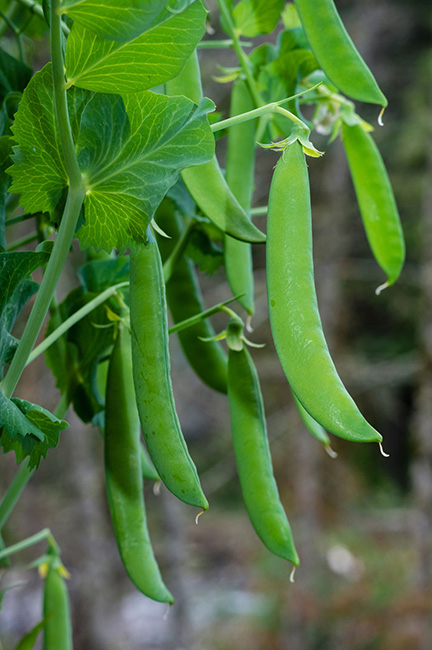Brief History Of Green Pea
(Pisum sativum L.)
Pea is a leguminous crop belonging to the family leguminoseae, which contain higher amount of protein and is an excellent human food. Peas are very common nutritious vegetable grown in cool season through out the world (Pandita and Pratap, 1986). It comes under the 3rd number in protein content after garlic and beans. The different cultivars studies in pakistan mostly contain 20-22 % of protein (Jabeen et al., 1988). Lukina (1990) has reported 24.3-26.6 percent protein in 158 cultivars of pea. In Pakistan it occupies an area of 142 thousand hectare with production of 78.3 thousand tones and average yield of 552 kg ha-1 (Anonymous, 1995-96). In Balochistan, it occupies an area of 941 hectare with the production of 10,430 tones and average yield of 11084 kg ha-1(Anonymous, 1998-1999).
- A. Kakar, M. Saleem , Rahim Shah and S. A. Qaim Shah , 2002. Growth and Marketable Green Pod Yield Performance of Pea (Pisum sativumL.) under Varying Levels of NPK Fertilizers.Asian Journal of Plant Sciences, 1: 532-534.
Green pea is grown for its seed, which is consumed fresh or canned. Pea seed contains about 22% protein (Key, 1979) and this, is comparable to those of common legumes such as cowpea, soybean and groundnut. Pea can therefore substantially substitute the protein sources of people on a starchy diet, particularly in a place like northern Nigeria, where most of the diets are carbohydrate-based. This explains why the introduction of green pea as an irrigated legume has received wide acceptance in northern Nigeria.
CORRELATION STUDY ON GREEN PEA (Pisum sativum L.) GROWN UNDER IRRIGATION IN SAMARU, ZARIA N.C. KUCHINDA* AND A.B. LAWAL
Acceptable well known states where it is grown
Egbe (2005) reported that the pigeon pea- producing states in Nigeria include: Kogi, Taraba, Benue, Plateau, Kaduna, Adamawa, Enugu and Ebonyi. Lagos and Ibadan sometimes grow it too. The total area subjected to its cultivation is estimated to be over 190,000 hectares of land.
Effect of Planting Dates on the Performance of Pigeonpea Varieties in Southern Guinea Savanna Ecology of Nigeria. Moses Onyilo Egbe1 *, Ambi Ayuba Aku2 Seyi Odebiyi3
Potential yield of the crop/ INCOME projection
Yields of field pea range from less than 1 t/ha in Africa and South America to over 4 t/ha in Europe. The average world yield is around 1.7 t/ha. Under good growing conditions sugar pea yields of up to 8 t/ha edible pods per ha can be obtained. Garden pea may produce 4–7 t/ha young seeds.
Total cost: 183,500
Estimated income: 260,000 - 300,000
Necessary input
Fertilizer
Field pea normally needs no Nitrogen fertilizer as the amount present in the soil and fixed by the plant is sufficient. The total uptake of a crop yielding 5–6 t of seed per ha is 30–35 kg/ha P and 200–250 kg/ha K. Young sugar pea and garden pea respond well to a starter dose of Nitrogen fertilizer, even when nodulation occurs. An indicative fertilizer recommendation on light medium-rich alkaline soils is 40 kg N, 50 kg P, 150 kg K and 30 kg Mg per ha. Irrigation is necessary in dry conditions, e.g. 10 mm twice a week.
Pesticide (same as White beans)
- Karate™ EC 80 ml/20 L of water (1 L/ha), Sherpa plus™ 80 ml/20 L of water or Cymbush super™ ED at 1.0 litre/ha. or Karate™ super Ed at 1.0 L/ha. Spraying must begin from 5 weeks after planting or at flower initiation at 7–10 days intervals with a maximum or 3 or 4 sprayings. However, aphid infestation occurs much earlier than 5WAP, Pirimor™ should be sprayed at 2 gm/20 L of water for aphid control or 40 ml/20L of water of Karate™ to control foliage beetles or aphids.

